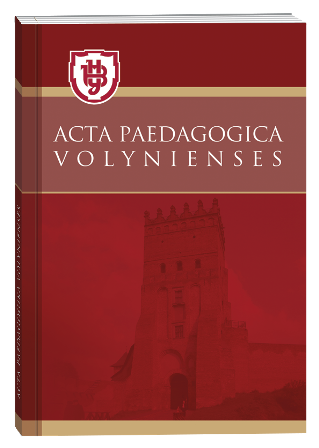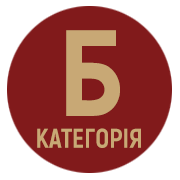INTERACTION OF THINKING AND SPEECH IN THE CONTEXT OF INTEGRATED SPEECH AND THINK ACTIVITY OF ARTISTIC STUDENTS
DOI:
https://doi.org/10.32782/apv/2022.2.22Keywords:
speech, thinking, cognitive processes, utterances, speech-thinking activity, perception, memory.Abstract
The article shows that thinking and language, acting in interaction as a higher mental function are characterized by interdependent features, each of which consists in the logical construction of thinking. The conditionality of the interaction of language and thinking comes from the recognition of the unity of these phenomena. The mechanisms of functioning of thinking in language, the ability of language to be an expression and implementer of thinking are characterized. The deterministic connection between thinking and the appearance of different language means is considered. Implementing the ideas of personality-oriented education, original solutions to current educational problems, requires a special organization of practical and mental activities of students. Modern development of the education system requires pedagogical science and practice to introduce new innovative technologies and teaching methods, assess the quality of students' knowledge. Pedagogical innovation consists in updating the pedagogical process, introducing new ideas into the traditional system of higher education. Thinking as an active process of reflecting objective reality in concepts, judgments, ideas, human ability to reason, draw conclusions. The term "speech-thought interaction" is considered as a structural-functional organization of consciousness, which determines the mutual transitions between sensory, perceptual and speech-thought levels. Speech activity is provided by various mechanisms (neurophysiological, psychological, information processing, formation of the picture of the world, memory, perception, thinking, etc.). Solving specific educational and pedagogical problems, scientific discussions, systematization of didactic material, modeling of mental processes will contribute to the conscious and creative mastery of the psychology of speech. Consistent introduction into practice of techniques, methods of pedagogical actions aimed at acquiring practical skills of conscious verbal and nonverbal behavior, which will be implemented in further professional activities. Scientists see the relationship between language and thinking in the fact that language is an instrument of formation, a means of expression and communication of thought. The connection is that the main mental categories, units of thought (concepts and judgments) are expressed by means of language, certain linguistic units: concepts are expressed in individual words or phrases, judgments – sentences. The theory of reference allows to use an extended approach to the definition of the category of such concepts as the quality of knowledge and to include comparative contexts. The author substantiated the importance of using speech-thinking analysis of students' answers, for such a generalization was the concept of evaluation (control) of academic achievement of students of art, which complements one aspect of the theory of reference. On this basis, a general typology of reference can be created in the communicative act of testing knowledge, taking into account the speech-thinking interaction of communication participants.
References
Выготский Л.С. Развитие высших психических функций. Москва, 1978. 393с.
Кант И. Антропология с прагматической точки зрения. Москва, 1966. Т. 6. 430с.
Потебня А. А. Мысль и язык. Москва: Лабиринт, 1999. 300 с.
Слободянюк Т.Б. Розвивальна комунікативна ситуація в навчально-виховному процесі. Проблеми освіти: Наук. зб./ Інститут інноваційних технологій і змісту освіти МОН України,-К.: 2015. –Вип.№ 80 ч.2.,С.271-274.







